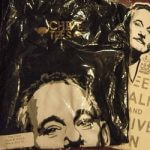Especially when you consider the fact that I am a first time, unknown writer such as myself.
However several interesting things have happened I never expected. I was completely taken off guard at the new things I began to notice that before I never even knew existed. (Of course this makes me wonder what else I am missing).
Amazon sales rank for instance. As any writer is likely aware Amazon and other online retailers track sales numbers for books that are sold through their respective sites.
Amazon goes so far as to regularly update their ranking numbers giving authors the ability numerous times through the day to see what their books are doing (of not doing) as to sales.
This has also created a plethora of individual lists for rankings. This has also created an addiction of sorts for some new authors, or so I’ve been told.
In the past the one major list people looked towards for “best seller” information was the New York Times Best Seller List. Period.
Today things are decidedly different with some of the online retailers offering a seemingly ever-increasing number of “best seller” lists.
In the past we had a fiction best seller list and a non-fiction best seller list.
Today while those two lists still exists, is seems like every week new lists are added as the existing lists are broken down in to growing list of categories.
However, this creates an interesting reality. Much like a search one would do on Google™, the more the search is refined the fewer results you get. In the realm of best sellers, the more you focus the list, the fewer books you have that make up the sub-genre.
In the past if you had two novels, one about a young woman involved in a coming of age story with vampires and another about a retired watchmaker searching for the perfect left-handed coffee cup, you’d have two works of fiction massed together with all of the other books on a single best seller list.
However, today with multiple sub-categories present, while the coming of age tale may be in the top 10 on virtually any all encompassing list from the New York Times Best Seller list on down, there may be one or two lists where the coffee cup seeker’s tale is #1. However, when was the last time you looked at the best seller list “Fiction-ebook-mystery-thriller-coffee related books-left-handed protagonist?”
Probably not too recently.
I’ve found myself in this trap and have worked to stay away from the fray. I find I generally feel better when I avoid the temptation to check my Amazon too often.
In large part, I’ve tried to avoid the sales rank obsession. Sure, I want my book to do well and I, like the majority of independent and small press authors, am working incredibly hard to ensure the success of my book, but Amazon sales rank is not the be all end all in the success equation.
Focus on small quantifiable steps. Every sale counts and if you go out and make the sale happen yourself, you stand a much better chance of having the reader you connected with go out and tell someone else about your book.
If you have a couple of events in a week and sell 50 books your Amazon numbers may drop significantly, but it was an incredible week for you as an author. Bases loaded home runs are amazing to watch but small ball will win games too.
Look at Amazon sales numbers from time to time, but remember that those sales numbers don’t take into account the good will you are building by getting out and selling your book. Take half a step back and realize the success you are enjoying.
So while you’re here why not read a chapter from my book or even buy a copy of your own. A portion of all proceeds from the sale of The Trust will be donated to canine related charities. I promise I won’t check my Amazon sales numbers until tomorrow!



